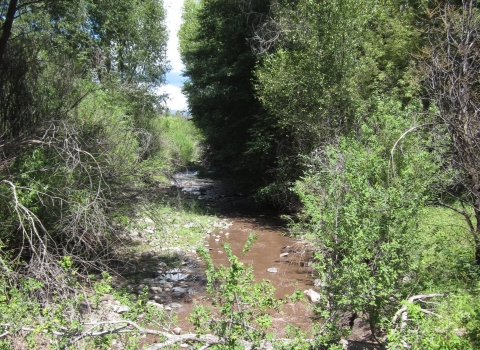Based on a review of the best scientific and commercial data available, the U.S. Fish and Wildlife Service has determined the Bethany Beach firefly — a nocturnal beetle found in coastal Delaware, Maryland, and Virginia — is likely to become endangered within the foreseeable future due to existing and emerging threats.
The Service announced today a proposal to list the species as threatened under the federal Endangered Species Act with a Section 4(d) rule. We invite public comments on this proposal until December 2, 2024.
Named for the coastal town in Delaware where it was discovered in 1949, the Bethany Beach firefly is distinguished from similar species by its small size — less than half an inch long — a black marking on its head, and a distinctive flash pattern.
The Bethany Beach firefly is found only in low-lying freshwater marsh areas near coastal dunes, called swales, located within 500 meters of the Atlantic shoreline in Delaware, Maryland, and Virginia. Swales provide shelter, a source of food, and moisture, which the species needs in all its life stages.
The greatest threats to the Bethany Beach firefly are the compounding impacts from climate change climate change
Climate change includes both global warming driven by human-induced emissions of greenhouse gases and the resulting large-scale shifts in weather patterns. Though there have been previous periods of climatic change, since the mid-20th century humans have had an unprecedented impact on Earth's climate system and caused change on a global scale.
Learn more about climate change on habitat availability. Rising sea levels, in addition to more frequent and severe storm events, threaten to first degrade and then destroy the species’ habitat. According to climate models, somewhere between 76% and 95% of swales could be lost to high-tide flooding by 2100.
Development, light pollution, recreation, grazing by ponies, the use of pesticides, and invasive plant species are other stressors to the firefly and its habitat.
Since 2019, the Delaware Department of Natural Resources and Environmental Control has conducted annual surveys for this species, documenting it in three Delaware state parks. In 2020, the firefly was discovered on Assateague Island National Seashore in Maryland, and in 2021, it was found at three sites in Virginia, including Chincoteague National Wildlife Refuge and NASA’s Wallops Flight Facility.
As part of this proposal, the Service is soliciting any available knowledge about the location of firefly sightings and habitat to better understand the species’ range and habitat needs. Those who believe they have observed a Bethany Beach firefly, which are active during the summer, may make a report by contacting the Chesapeake Bay Field Office at: (410) 573-4599
The proposed rule to list the Bethany Beach firefly as threatened is available for public inspection today in the Federal Register reading room.
Tomorrow, Tuesday, October 1, the document will publish in the Federal Register — https://www.federalregister.gov/documents/current — opening a 60-day public comment period that closes on December 2, 2024.
Comments can be submitted through regulations.gov under docket number FWS-R5-ES-2024-0080.



